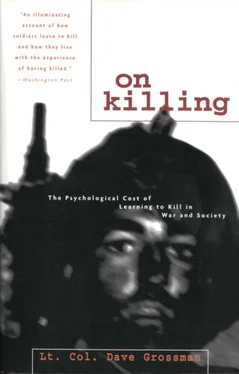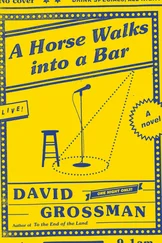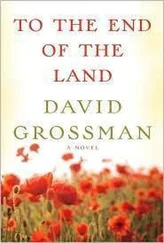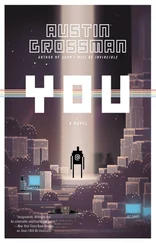Yet despite the obvious options of firing over the enemy’s head (posturing), or simply dropping out of the advance (a type of flight), and the widely accepted option of loading and supporting those who were willing to fire (a limited kind of fighting), evidence exists that during black-powder battles thousands of soldiers elected to passively submit to both the enemy and their leaders through fake or mock firing. The best indicator of this tendency toward mock firing can be found in the salvage of multiply-loaded weapons after Civil War battles.
The Dilemma of the Discarded Weapons
Author of the Civil War Collector’s Encyclopedia F. A. Lord tells us that after the Bade of Gettysburg, 27,574 muskets were recovered from the battlefield. Of these, nearly 90 percent (twenty-four thousand) were loaded. Twelve thousand of these loaded muskets were found to be loaded more than once, and six thousand of the multiply loaded weapons had from three to ten rounds loaded in the barrel. One weapon had been loaded twenty-three times. Why, then, were there so many loaded weapons available on the battlefield, and why did at least twelve thousand soldiers misload their weapons in combat?
A loaded weapon was a precious commodity on the black-powder battlefield. During the stand-up, face-to-face, short-range battles of this era a weapon should have been loaded for only a fraction of the time in battle. More than 95 percent of the time was spent in loading the weapon, and less than 5 percent in firing it. If most soldiers were desperately attempting to kill as quickly and efficiently as they could, then 95 percent should have been shot with an empty weapon in their hand, and any loaded, cocked, and primed weapon available dropped on the battlefield would have been snatched up from wounded or dead comrades and fired.
There were many who were shot while charging the enemy or were casualties of artillery outside of musket range, and these individuals would never have had an opportunity to fire their weapons, but they hardly represent 95 percent of all casualties. If there is a desperate need in all soldiers to fire their weapon in combat, then many of these men should have died with an empty weapon. And as the ebb and flow of battle passed over these weapons, many of them should have been picked up and fired at the enemy.
The obvious conclusion is that most soldiers were not trying to kill the enemy. Most of them appear to have not even wanted to fire in the enemy’s general direction. As Marshall observed, most soldiers seem to have an inner resistance to firing their weapon in combat. The point here is that the resistance appears to have existed long before Marshall discovered it, and this resistance is the reason for many (if not most) of these multiply loaded weapons.
* * *
The physical necessity for muzzle-loaders to be loaded from a standing position, combined with the shoulder-to-shoulder massed firing line so beloved of the officers of this era, presented a situation in which — unlike that studied by Marshall — it was very difficult for a man to disguise the fact that he was not shooting. And in this volley-fire situation, what du Picq called the “mutual surveillance” of authorities and peers must have created an intense pressure to fire.
There was not any “isolation and dispersion of the modern battlefield” to hide nonparticipants during a volley fire. Their every action was obvious to those comrades who stood shoulder to shoulder with them. If a man truly was not able or willing to fire, the only way he could disguise his lack of participation was to load his weapon (tear cartridge, pour powder, set bullet, ram it home, prime, cock), bring it to his shoulder, and then not actually fire, possibly even mimicking the recoil of his weapon when someone nearby fired.
Here was the epitome of the industrious soldier. Carefully and steadily loading his weapon in the midst of the turmoil, screams, and smoke of battle, no action of his was discernible as being something other than that which his superiors and comrades would find commendable.
* * *
The amazing thing about these soldiers who failed to fire is that they did so in direct opposition to the mind-numbingly repetitive drills of that era. How, then, did these Civil War soldiers consistently “fail” their drillmasters when it came to the all-important loading drill?
Some may argue that these multiple loads were simply mistakes, and that these weapons were discarded because they were misloaded. But if in the fog of war, despite all the endless hours of training, you do accidentally double-load a musket, you shoot it anyway, and the first load simply pushes out the second load. In the rare event that the weapon is actually jammed or nonfunctional in some manner, you simply drop it and pick up another. But that is not what happened here, and the question we have to ask ourselves is, Why was firing the only step that was skipped? How could at least twelve thousand men from both sides and all units make the exact same mistake?
Did twelve thousand soldiers at Gettysburg, dazed and confused by the shock of battle, accidentally double-load their weapons, and then were all twelve thousand of them killed before they could fire these weapons? Or did all twelve thousand of them discard these weapons for some reason and then pick up others? In some cases their powder may have been wet (even through their oiled-paper coating), but that many? And why did six thousand more go on to load their weapons yet again, and still not fire? Some may have been mistakes, and some may have been caused by bad powder, but I believe that the only possible explanation for the vast majority of these incidents is the same factor that prevented 80 to 85 percent of World War II soldiers from firing at the enemy. The fact that these Civil War soldiers overcame their powerful conditioning (through drill) to fire clearly demonstrates the impact of powerful instinctive forces and supreme acts of moral will.
If Marshall had not asked the soldiers immediately after battle in World War II, we would have never known the amazing ineffectiveness of our fire. In the same way, since no one asked the soldiers of the Civil War, or any other war prior to World War II, we cannot know the effectiveness of their fire. What we can do is extrapolate from the available data, and the available data indicate that at least half of the soldiers in black-powder battles did not fire their weapons, and only a minute percentage of those who did fire aimed to kill the enemy with their fire.
Now we can begin to fully understand the reasons underlying Paddy Griffith’s discovery of an average regimental hit rate of one or two men per minute in firefights of the black-powder era. And we see that these figures strongly support Marshall’s findings. With the rifled muskets of that era, the potential hit rate was at least as high as that achieved by the Prussians with smoothbore muskets when they got 60 percent hits at seventy-five yards. But the reality was a minute fraction of this.
Griffith’s figures make perfect sense if during these wars, as in World War II, only a small percentage of the musketeers in a regimental firing line were actually attempting to shoot at the enemy while the rest stood bravely in line firing above the enemy’s heads or did not fire at all.
When presented with this data, some respond that they are specific to a civil war in which “brother fought brother.” Dr. Jerome Frank answers such claims clearly in his book Sanity and Survival in the Nuclear Age, in which he points out that civil wars are usually more bloody, prolonged, and unrestrained than other types of war. And Peter Watson, in War on the Mind, points out that “deviant behavior by members of our own group is perceived as more disturbing and produces stronger retaliation than that of others with whom we are less involved.” We need only look at the intensity of aggression between different Christian factions in Europe in the past and in Ireland, Lebanon, and Bosnia today, or the conflict between Leninist, Maoist, and Trotskyist Communists, or the horror in Rwanda and other African tribal battles, to confirm this fact.
Читать дальше







